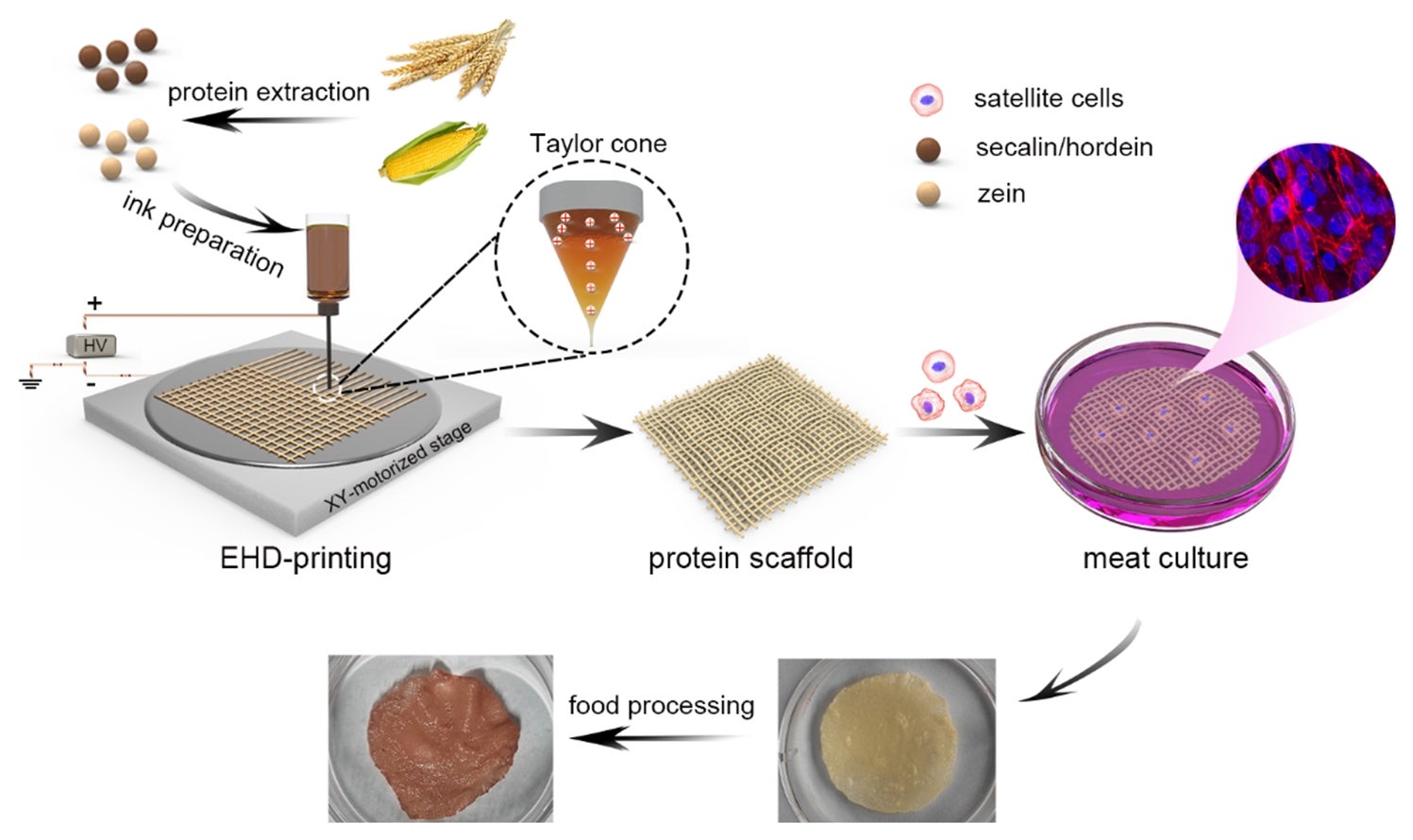3D-printed plant protein scaffolds for cell-based meat culture
May 01, 2023National University of Singapore (NUS) food scientists developed three-dimensional (3D)-printed edible scaffolds for cell-based meat culture using ink based on proteins extracted from barley, rye and maize.
Cultured meat is made of genuine animal meat and produced by growing animal cells directly. The cultured meat market size has been growing due to increasing environmental, health and food security issues. There had been on-going research efforts to improve the technical capabilities of the cultivation process, including innovations in the scaffolding that cells adhere to and grow into tissues that will eventually be processed into slices of meat. While various types of scaffolding systems are available for cell culture, the majority of them are made from synthetic or animal-derived materials that are either too expensive or inedible. This makes them unsuitable for use in the mass production of cultured meat.
A research team led by Professor HUANG Dejian from the Department of Food Science and Technology, NUS has developed a plant-protein based ink for the 3D printing of edible scaffolds that can anchor and allow muscle cells to grow and multiply for the production of cell-based meat (see Figure). The research team uses a type of high precision 3-D printing technology known as electrohydrodynamic printing (EHDP) for their work. As EHDP is used mainly in biomedical applications, it is challenging to find a suitable ink with desirable printing characteristics for food applications.
This work was published in the journal Advanced Materials.
The ink created by the research team is based on a mixture of zein with hordein or secalin. These belong to a class of plant storage proteins called prolamins found mainly in cereal grains. Prolamins are produced largely as waste products in the starch and vegetable oil industries and have great potential as biomedical materials. The use of prolamins in the ink is not only sustainable but can also reduce the cost of the 3D printed scaffolds due to their broad accessibility.
Prof Huang said, “By using readily available cereal prolamins as biomaterials for high precision 3D printing technology, we open up a new method for manufacturing edible and structured scaffolds to produce cultured muscle meat slices with fibrous qualities.”
The 3D printed scaffolds exhibited good biocompatibility with porcine stem cells. These stem cells adhered to the scaffold and were able to proliferate and form meat tissues on the scaffolds. Within 12 days, the research team was able to culture a slice of pork from their 3D printed scaffolds.
The team is now investigating the influence of the scaffold structure on the alignment of the muscle cells to better mimic the structure of these tissues in our food. They also plan to conduct a study on the safety, texture, sensory quality and nutritional value of cell-based meat by co-culturing the muscle cells with fat cells using their scaffolds in a large-scale bioreactor.

Figure: Schematic illustration of the cultured meat model based on prolamin scaffolds using 3D printing technology. The extracted plant proteins are used in the ink for patterning the scaffold. Muscle cells are then introduced and the whole assembly is then allowed to grow under culture conditions. [Credit: ADVANCED MATERIALS]
Reference
Su L; Jing L*; Zeng X; Chen T; Liu H; Kong Y; Wang X; Yang X; Fu C; Huang D*, “3D-Printed Prolamin Scaffolds for Cell-based Meat Culture” ADVANCED MATERIALS DOI: 10.1002/adma.202207397 Published: 2022.


